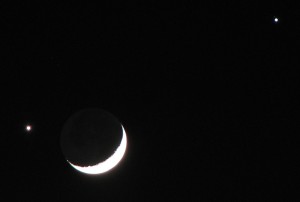Sure, the Earth’s moon is great and all, but what are the most whacked out moons in our solar system? New Scientist has the answer in “The Solar System’s 10 Strangest Moons,” an article that examines some of “the most frigid, violent and strange” ones. A couple of examples.
*****
Pockmarked with sulphurous pits, bathed in intense radiation and shaken by constant volcanic eruptions, Io is the fiery hell of the solar system.
Despite being cold enough to be covered in layers of sulphur dioxide frost, this large inner moon of Jupiter is the most volcanic world known, spitting out 100 times as much lava as all Earth’s volcanoes can muster, from a surface area just 1/12th the size. Io’s surface is dotted with bubbling lakes of molten rock, the largest of which, Loki Patera, is more than 200 kilometres across.
*****
Most moons are either round and smooth, or lumpy pieces of space rock. Saturn’s Pan and Atlas, on the other hand, come straight from the set of a 1950s B-movie. With a central bulge set inside a disc-like ridge, they bear an uncanny resemblance to your stereotypical flying saucers. Atlas, the flatter of the two, has a diameter of only 18 kilometres from pole to pole, but is almost 40 kilometres across its waist.
Their strange shape is something of a mystery. While the moons’ rapid rotation would be enough to squash them into a smooth oval it can’t explain the rim around the centre of the saucer shape.

